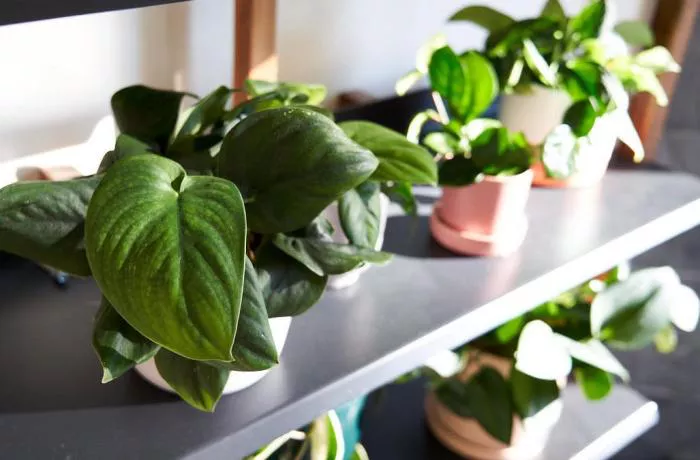Jade satin plants, also known as Crassula ovata, are popular houseplants. They are easy to care for and add beauty to any space. In this article, we will explore how to properly care for your jade satin plant.
Light Requirements
Jade satin plants thrive in bright, indirect sunlight. They can tolerate direct sunlight, but too much can cause leaf burn. A south-facing window is ideal. If you notice the leaves stretching toward the light, your plant may need more sunlight.
Rotate your plant every few weeks. This ensures even growth and prevents it from leaning toward the light source.
Watering Schedule
Watering is crucial for the health of your jade satin plant. Overwatering can lead to root rot, while underwatering can cause the leaves to shrivel.
A good rule of thumb is to water your plant when the top inch of soil feels dry.
During the growing season, which is spring and summer, water more frequently. In fall and winter, reduce watering as the plant enters dormancy.
When watering, soak the soil thoroughly. Ensure excess water drains out of the pot. Never let your jade satin plant sit in water.
Soil and Potting
Choosing the right soil is vital for jade satin plants. A well-draining potting mix is essential. You can use a cactus mix or make your own by mixing potting soil with sand or perlite.
The pot should have drainage holes. This helps prevent water from accumulating at the bottom, reducing the risk of root rot.
If your plant becomes root-bound, it’s time to repot. Choose a pot that is one size larger. This gives the roots room to grow. Repotting is best done in spring.
Fertilizing
Fertilizing your jade satin plant can promote healthy growth. During the growing season, use a balanced liquid fertilizer. Dilute it to half strength.
Fertilize every 4-6 weeks during spring and summer.
Do not fertilize in fall and winter. The plant is dormant and does not require extra nutrients during this time.
Temperature and Humidity
Jade satin plants prefer temperatures between 65°F and 75°F (18°C to 24°C). They can tolerate slightly cooler temperatures but should be protected from frost.
Avoid placing your plant near drafts or heat sources. This can cause stress and affect its growth.
Humidity is not a major concern for jade satin plants. They thrive in average indoor humidity levels. If your home is very dry, occasional misting can help.
Pruning and Propagation
Pruning helps maintain the shape of your jade satin plant. Remove any dead or damaged leaves regularly. This encourages new growth and keeps your plant healthy.
You can also propagate jade satin plants easily. Take a healthy leaf or stem cutting and allow it to dry for a few days.
Once the cut end calluses over, plant it in well-draining soil. Water lightly until roots develop. This process can take several weeks.
Pest Management
Pests can be a concern for jade satin plants. Common pests include mealybugs, aphids, and spider mites.
Inspect your plant regularly for signs of pests. Look for sticky residue, webbing, or visible insects.
If you notice pests, treat them immediately. You can wipe them off with a damp cloth or use insecticidal soap.
Keep your plant healthy, as strong plants are less likely to attract pests.
Common Issues
Despite their hardiness, jade satin plants can experience issues. The most common problem is leaf drop. This can be caused by overwatering, underwatering, or temperature fluctuations.
If leaves are turning yellow, check your watering habits. Yellow leaves often indicate overwatering.
If your plant is stretching, it may not be receiving enough light. Adjust its location to ensure it gets enough sunlight.
Conclusion
Caring for a jade satin plant is straightforward. By providing the right light, water, and soil, you can enjoy a healthy, thriving plant. Regular maintenance, such as pruning and pest management, will ensure your plant remains beautiful for years.
With proper care, your jade satin plant can become a stunning addition to your home. Its resilience and charm make it a favorite among plant enthusiasts. Enjoy the journey of nurturing this wonderful plant!
Related topics:


